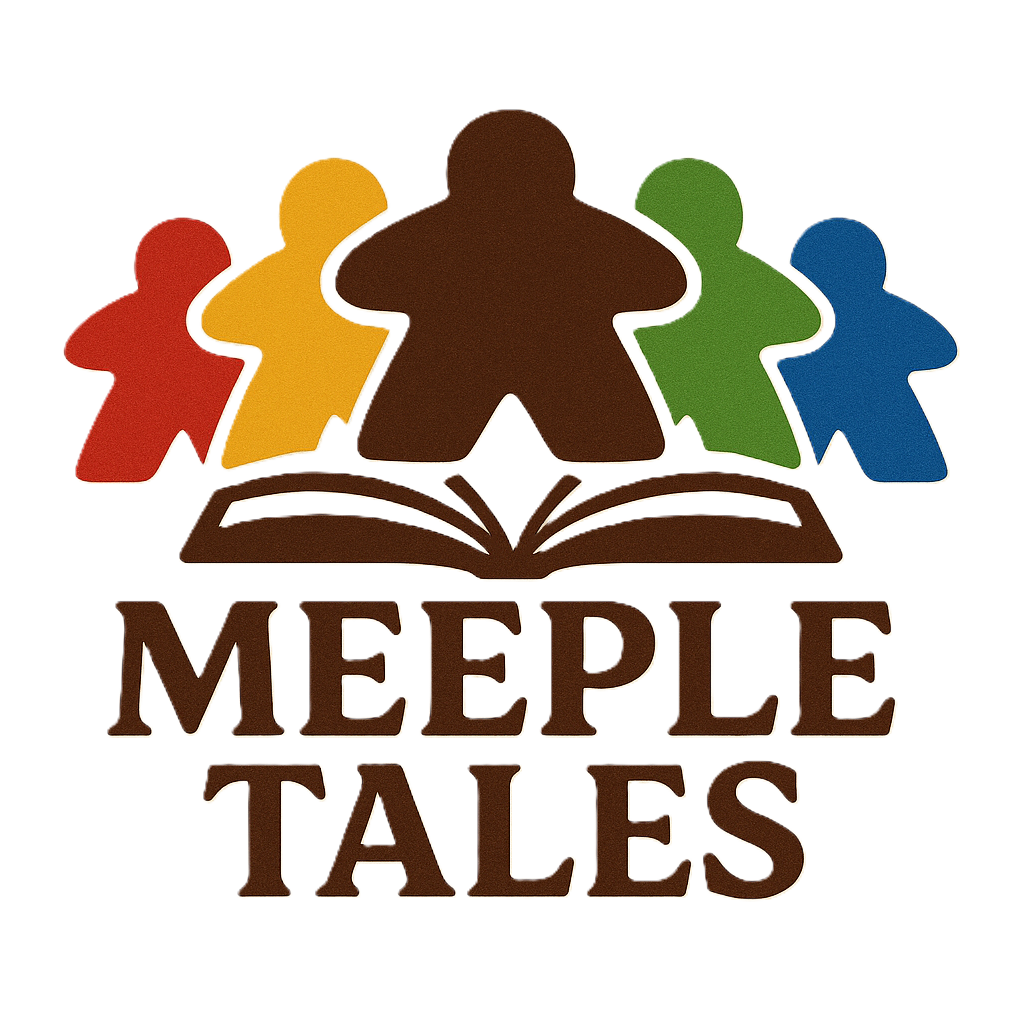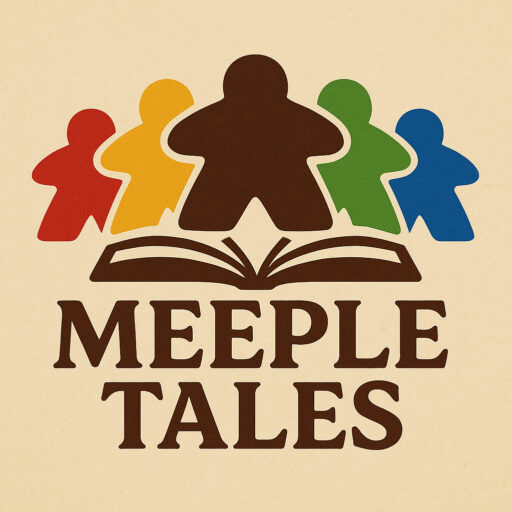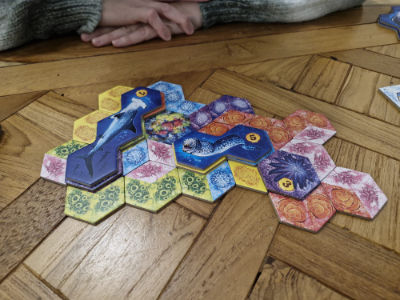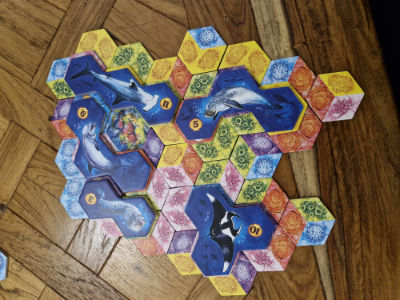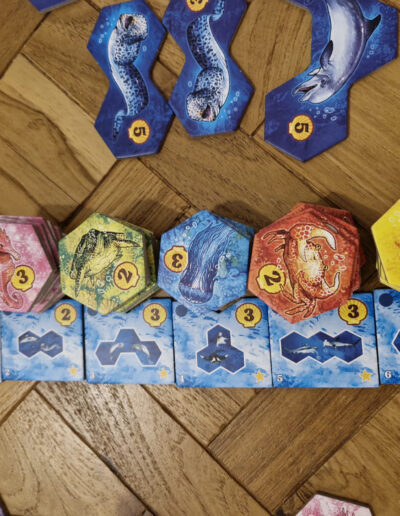Aantal spelers: 1-4
Speelduur: 30-45 minuten
Leeftijd: Vanaf 8 jaar
Auteur: Dan Halstad, Tristan Halstad
Uitgever: Asmodee
Jaar: 2024
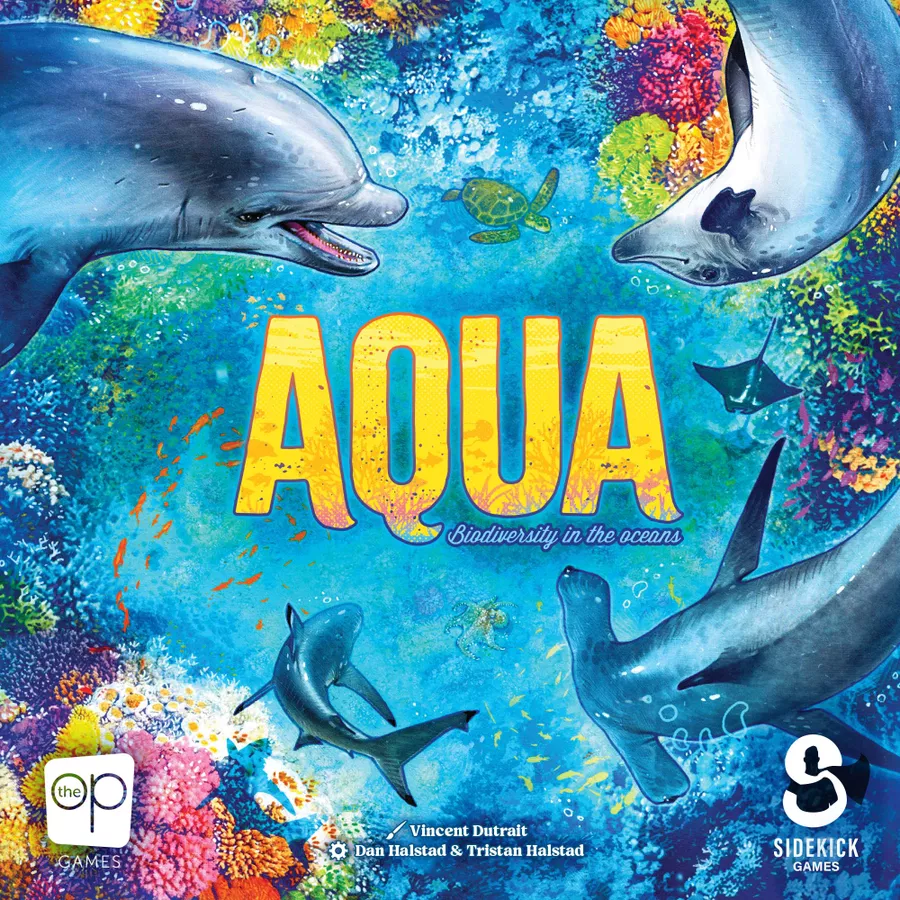

Dit is een herpublicatie van een review die ik eerder schreef voor bordspelwereld.nl
Het online advertentiegeweld lachte me al een paar weken toe. Al menig filmpje keek ik enthousiast en ik heb dus ook niet het geduld gehad om te wachten op de Nederlandse uitgave. Toen Boardgamegeek er ook nog een FrontPage artikel aan weidde, zwichtte ik voor al het leuke kleurgeweld dat zich steeds meester maakte van mijn nieuwsgierige brein. Inmiddels is de Nederlandse versie er al wel en stromen ook Facebook en Instagram timelines vol met enthousiaste spelers! Ik ben één van hen en speel het inmiddels al weken met veel plezier.
Hoewel Aqua de zoveelste tile placement game met hexagons is, moet je zeker niet denken dat je met deze game meer van hetzelfde koopt. Toegegeven, het spel is een combinatie van mechanismes en spellen die je al kent in een nieuw jasje. Ik denk dat veel mensen daarom wel eens zouden kunnen denken: zoiets heb ik al. Zeker dat is ook zo, en toch heb je het ook weer niet!
Sowieso is de uiterst mooie uitvoering genoeg reden om hem te willen hebben. Het kleurgebruik en kwaliteit van de tegels zijn om over naar huis te schrijven. Een feestje voor het oog. En na alle landdieren die normaliter vaak op dit soort tegels verschijnen, waan je je nu in een heus aquarium. Alleen al voor de waterwereld liefhebbers is dit thematisch gezien al een koren op hun molen. En niet alleen het thema is diepgaander, ook de combinatie van de mechanismes zorgen letterlijk en figuurlijk voor meer lagen in dit spel.
We kennen het wel: tegels als dominostenen aan elkaar schakelen zodat figuren of combinaties ontstaan die punten opleveren. Bij Aqua is dit niet anders. Middels een marktmechanisme (die niet direct aangevuld wordt tijdens de rondes) kies je om de beurt strategisch een koraal tegel die uit verschillende koralen bestaat. Hiermee probeer je kleine vissen aan te trekken die op zichzelf al punten waard zijn. Maar kleine vissen die uniek van kleur zijn, trekken in verschillende combinaties grote vissen aan, die óók weer punten waard zijn. Deze kleine vissen en grote vissen zijn tegels die je over jouw gevormde veld heen legt, waardoor er een heus 3D spektakel ontstaat. Om deze vissen probeer je met je koraal riffen te maken (aaneenschakeling van vier koralen in dezelfde kleur), om bij de eindtelling opnieuw punten te scoren voor de kleine vissen die zich onder de grote vissen bevinden en aan dat rif grenzen.
Tot nu toe klinkt het redelijk recht toe, recht aan. De echte puzzel en breinbreker zit hem dan ook in de puntentelling. Want vooraf selecteer je een aantal scoretegels, die bepalen op welke manier aan het einde van het spel alle vissen in jouw waterwereld nog punten scoren. Zo kunnen je grote vissen nog meer punten opleveren als je de kleine vissen slim hebt weten te combineren, of bijvoorbeeld veel van eenzelfde soort kleine vis hebt weten te scoren, die vervolgens als vermenigvuldigingsfactor kunnen dienen. Voorafgaand aan het spel koppel je de verschillende kleine visjes aan deze scoringstegels. Je weet dan dat deze combinaties bij de eindtelling nog punten opleveren. Zo is er een tegel die ervoor zorgt dat je voor bijvoorbeeld een inktvis nog extra punten krijgt. Stel dat hier de stapel met gele vissen bij ligt, dan krijg je dus aan het einde van het spel nog het aantal gele vissen x het aantal inktvissen x het aantal punten dat de scoretegel aangeeft. Het leuke is natuurlijk dat hier ontelbaar veel combinaties in te maken zijn, alleen al omdat er een behoorlijk aantal van deze scoringstegels in de doos zitten, die telkens aan een andere kleur gekoppeld worden. Dat kan nog best ingewikkeld worden en in de papieren lopen. Om er een beetje in te komen zijn er starttegels voor beginnende spelers. Later kun je toewerken naar scenario’s en doelen om het nog uitdagender en ingewikkelder te maken.
Anders dan andere soortgelijke spellen, zoals bijvoorbeeld bij Calico en Cascadia, wordt de markt niet direct aangevuld. De markt bestaat altijd uit één kaart meer dan het aantal spelers en wordt eerst helemaal leeg gespeeld. De startspeler heeft dus altijd twee tegels uit de markt, namelijk: de eerste keus en de tegel die als laatste overblijft. Pas hierna wordt de markt aangevuld en wordt de volgende speler startspeler. Je kan dus niet zomaar onbeperkt bouwen en plannen, je zult je in je strategische keuzes altijd moeten verhouden tot wat er ligt en soms is dat dus maar één tegel. Je zult merken dat je de ene keer overgeleverd bent aan het maken van een heleboel riffen waarbij aangrenzende kleine vissen bij de eindtelling nogmaals scoren, om zo een vermenigvuldigingseffect te bewerkstelligen. De andere keren krijg je de juiste koralen zo in je schoot geworpen en zul je floreren in de grote vissen die veel punten opleveren omdat je veel kleine vissen kunt aantrekken, maar loop je wellicht stuk op de riffen. Die grote vissen lijken grote stappen snel thuis, want veel punten en dus: voila, de winst. Maar vergis je niet. Een kleine minder punten opleverende vis kan zomaar de echte cash cow zijn, als je ‘m weet te omringen door meerdere riffen, waardoor je ’m vaker kan scoren.
Dan is er, hoewel we ons in de diepe zee bevinden, ook nog een addertje onder het gras. Wanneer je genoeg kleine vissen hebt verzameld om hem te bedekken met een grote vis, heb je altijd de keus om nog even door te spelen voor een nóg grotere vis. Het betekent alleen wel dat je niet meer terug kan komen op je beslissing en dat de vis die je laat liggen definitief aan je neus voorbij gaat, wat die combinatie betreft. Dat is enigszins hoog spel spelen, omdat onder elke grote vis enkel unieke kleuren kleine vissen mogen liggen en nooit twee dezelfde en tsja, met de moeilijkheid van een uitverkopende markt, moet het je maar net lukken om een nog grotere vis aan te trekken. Soms gok je en verlies je dus.
Je ziet, zo zijn er een hoop haken en ogen die Aqua een echt duveltje in een prachtig doosje maken. De kleuren en de vormen doen je vermoeden een lichte puzzel te hebben aangeschaft. Maar ga je er met de zelfde lichtheid in als bijvoorbeeld een Cascadia, die ook al meer diepgang heeft dan op ‘t eerste oog lijkt, dan kom je bedrogen uit.
Je hoort het, ik ben fan! Natuurlijk, feit blijft, de ervaren speler kent dit wel. Ik ben dus zeker niet zo verrast als ik hoopte. Maar los van dat kun je er niet omheen dat het gewoon goed in elkaar zit en mooi, dat vooral: heel mooi! Dat in combinatie met het leuk samenbrengen en uitdiepen van de bekende mechanismes maakt wel dat ik zeker geen spijt heb van mijn aankoop. De herspeelbaarheid is zeer hoog door de ontelbare scoringsmogelijkheden en opdrachten. Een beginnende speler kan zeker meekomen met het mechanisme en de meer ervaren speler kan puzzelen naar hartenlust, waardoor dit spel een toegankelijk spel is voor een breed publiek. En dan is het toch echt: ere wie ere toekomt. Chapeau!
Enige puntje van kritiek: bij twee spelers haal je relatief veel tegels uit het spel. Ik vermoed om soortgelijk uit te komen als met meer spelers en om niet teveel in een repetitieve handeling terecht te komen, maar het voelt nu als te weinig. Wij smokkelen er wanneer we met zijn tweeën spelen dus op los en laten meer tegels in het spel zitten dan eigenlijk aangegeven. Ben je geen smokkelaar en wil je het spel netjes volgens de regels spelen, dan is het spel het leukste vanaf drie spelers!
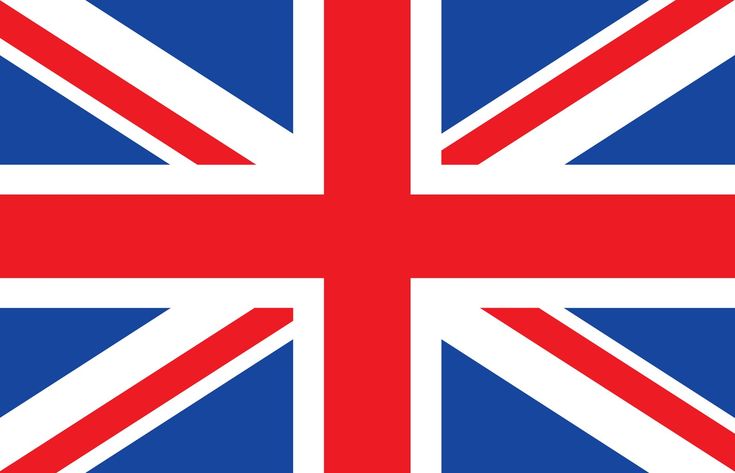
Aqua
Players: 1-4
Time: 30-45 minutes
Age: 8+
Author: Dan Halstad, Tristan Halstad
Publisher: Sidekick Games
Year: 2024


The online advertising violence has been smiling at me for a few weeks now. Already many a video I watched enthusiastically, so I didn’t have the patience to wait for the Dutch release either. When Boardgamegeek also devoted a FrontPage article to it, I succumbed to all the fun color violence that constantly took over my curious brain. By now, the Dutch version is here and Facebook and Instagram timelines are also flooding with enthusiastic players! I am one of them and have been happily playing it for weeks now.
Although Aqua is yet another tile placement game with hexagons, you should definitely not think that you are buying more of the same with this game. Granted, the game is a combination of mechanics and games you already know in a new guise. I think that’s why many people might think: I already have something like this. Sure you do, and yet again you don’t!
Anyway, the extremely beautiful design is enough reason to want it. The colors and quality of the tiles are to write home about. A feast for the eyes. And after all the land animals that normally appear on these types of tiles, you now imagine yourself in a real aquarium. For water world lovers alone, this is thematically grist for their mill. And not only is the theme more profound, but the combination of mechanics literally and figuratively add more layers to this game.
We’re familiar with it: connecting tiles together like dominoes to create figures or combinations that score points. In Aqua, this is no different. Through a market mechanism (which is not immediately replenished during the rounds) you take turns strategically choosing a coral tile consisting of different corals. With these, you try to attract small fish that are worth points by themselves. But small fish that are unique in color attract large fish in different combinations, which are also worth points. These small fish and big fish are tiles that you place over your formed field, creating a real 3D spectacle. Around these fish, you try to make reefs with your coral (sequence of four corals of the same color), to score points again at the final count for the small fish that are under the big fish and adjacent to that reef.
So far, it sounds pretty straightforward. The real puzzle and conundrum, then, is in the scoring. Because beforehand, you select a number of scoring tiles, which determine how at the end of the game all the fish in your water world still score points. For example, your big fish can score even more points if you have managed to cleverly combine the small fish, or, for example, score many of the same kind of small fish, which can then serve as multipliers. Prior to the game, you pair the different small fish with these scoring tiles. You then know that these combinations will still score points at the final count. For example, there is a tile that makes sure you get extra points for, say, a squid. Suppose this is the stack of yellow fish, then at the end of the game you get the number of yellow fish x the number of squid x the number of points indicated by the scoring tile. Of course, the fun part is that there are countless combinations to be made in this, if only because there are quite a few of these scoring tiles in the box, which are linked to a different color each time. That can still get quite complicated and run into paperwork. To get into it a bit, there are starting tiles for beginning players. Later you can work up to scenarios and goals to make it even more challenging and complicated.
Unlike other similar games, like Calico and Cascadia, for example, the market is not replenished immediately. The market always consists of one card more than the number of players and is first played completely empty. So the starting player always has two tiles from the market, namely: the first choice and the tile that remains last. Only after this, the market is replenished and the next player becomes starting player. So you cannot just build and plan without limit, you will always have to relate your strategic choices to what is available and sometimes that is just one tile. You will find that one time you are at the mercy of making a lot of reefs where adjacent small fish score again at the final count, to create a multiplier effect. Other times you’ll get the right corals right in your lap and you’ll flourish in the big fish that score a lot of points because you can attract a lot of small fish, but might run aground on the reefs. Those big fish seem like big moves quickly home, because lots of points and thus: voila, the win. But make no mistake. A small less scoring fish can just be the real cash cow, if you manage to surround it with multiple reefs, allowing you to score it more often.
Then, although we are in the deep sea, there is also a catch. When you’ve collected enough small fish to cover it with a big fish, you always have the choice to play on for an even bigger fish. It just means that you can’t go back on your decision and the fish you leave behind will permanently pass you by, as far as that combination is concerned. That is playing somewhat high stakes, because under each big fish there can only be unique colors of small fish, and never two of the same, and well, with the difficulty of a sell-out market, you just have to manage to attract an even bigger fish. Sometimes you gamble and so you lose.
You see, there are a lot of hooks and eyes that make Aqua a real gem in a beautiful box. The colors and shapes make you suspect you’ve purchased a light puzzle. But if you go into it with the same lightness as, say, Cascadia, which also has more depth than meets the eye, you will be disappointed.
I’m a fan! Of course, the fact remains, the experienced player knows this. So I’m certainly not as surprised as I hoped. But aside from that, you can’t ignore the fact that it’s just well put together and beautiful, that above all: very beautiful! That coupled with the nice bringing together and deepening of the familiar mechanics does make me definitely not regret my purchase. The replayability is very high due to the countless scoring options and missions. A novice player can certainly keep up with the mechanics and the more experienced player can puzzle to their heart’s content, making this game an accessible game for a wide audience. And then it really is: credit where credit is due. Chapeau!
Only point of criticism: with two players, you remove relatively many tiles from the game. I suspect to come out similar as with more players and to not get into too much repetitive action, but it feels like too little now. So we smuggle in when playing in pairs and leave more tiles in the game than actually indicated. If you are not a smuggler and want to play the game neatly according to the rules, then the game is most fun from three players up!
